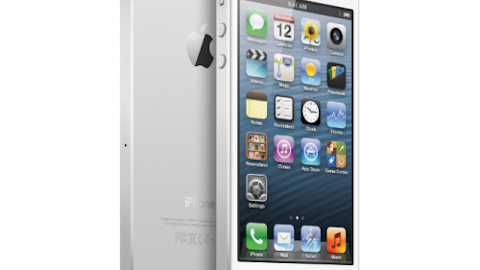
BlackBerry Z10. Source: BlackBerry.
Working from the high end down, Research In Motion Ltd (NASDAQ:BBRY) has been in the process of (slowly) releasing its first flagship BlackBerry 10 phone, the BlackBerry Z10, into the wild. BB10 is built on an entirely new source code called QNX, which offers the promise of a modern-day mobile OS, coupled with the potential to act as a modern-day cross-compatible platform. BlackBerry promises QNX will one day connect with your car, home, and the health-care system from your device. The Z10 is also a sharp divergence from the traditional designs of the keyboard-entrenched device maker.
Ultimately, Research In Motion Ltd (NASDAQ:BBRY) is planning on releasing six devices based on BB10 in 2013, split evenly between keyboard and touch models, covering a range of price points from the low end to the high. But considering the Z10 fetches an unsubsidized $599, BlackBerry is a few steps behind Nokia in terms of tapping emerging-market growth opportunities with a modern-day mobile OS.
Enterprise considerations
Although Research In Motion Ltd (NASDAQ:BBRY)’s enterprise position has been under pressure lately, it hasn’t stopped the company from boasting about how more than 3,500 enterprises and government agencies are currently evaluating BB10 for future use. The thinking is that if Research In Motion Ltd (NASDAQ:BBRY) can catch a few whales, investors could see it as a huge victory. Since Nokia Corporation (ADR) (NYSE:NOK) can’t fall back on these sorts of deals, its approach is more grassroots-driven in terms of growing market share. And you’d better believe that Research In Motion Ltd (NASDAQ:BBRY) is working furiously behind the scenes to catch a whale of a customer. Last week, the company announced that it received an order for 1 million BB10 devices, the largest order in the company’s history.
But what really sets Research In Motion Ltd apart from Nokia are the highly profitable service fees it receives from customers who want enhanced security. However, with the transition from BB7 to BB10, service fees are likely to be reduced for customers who opt out of enhanced security. In other words, investors banking on service fee growth may be in for a bad surprise.
No cut-and-dried answer
I wish it was as easy as saying Research In Motion Ltd or Nokia Corporation (ADR) (NYSE:NOK) has the absolute best chance of success in 2013, but it’s not. Both companies have their share of advantages and disadvantages, which ultimately muddles investor thinking here. I can say, however, that both companies are starting from essentially zero, and both have taken a slightly different approach to their growth strategies. In terms of timing, investors have effectively grown bored of Apple Inc. (NASDAQ:AAPL)’s offerings, which has created an opportunity for both of these companies to wow investors with exciting new products.
Nokia Corporation (ADR) (NYSE:NOK) is fully embracing its emerging-market growth opportunity with the introduction of a smartphone that has the potential to be an Android killer, where Research In Motion Ltd will probably be doing what it did best: attacking the enterprise market. With more than half of Nokia’s device revenue coming from feature phones, the company still has its fair share of challenges to deal with. On the other hand, Research In Motion Ltd (NASDAQ:BBRY) has to go at this alone, where Nokia has a deep-pocketed partner like Microsoft to lean on for support.
If I had to boil it down to one factor, I think the company that ultimately fares the best in emerging markets will be the one that has the best chances of future success.
The article Better Smartphone Comeback Play: BlackBerry or Nokia? originally appeared on Fool.com.
Fool contributor Steve Heller owns shares of Apple and Google. The Motley Fool recommends Apple and Google and owns shares of Apple, Google, and Microsoft.
Copyright © 1995 – 2013 The Motley Fool, LLC. All rights reserved. The Motley Fool has a disclosure policy.


